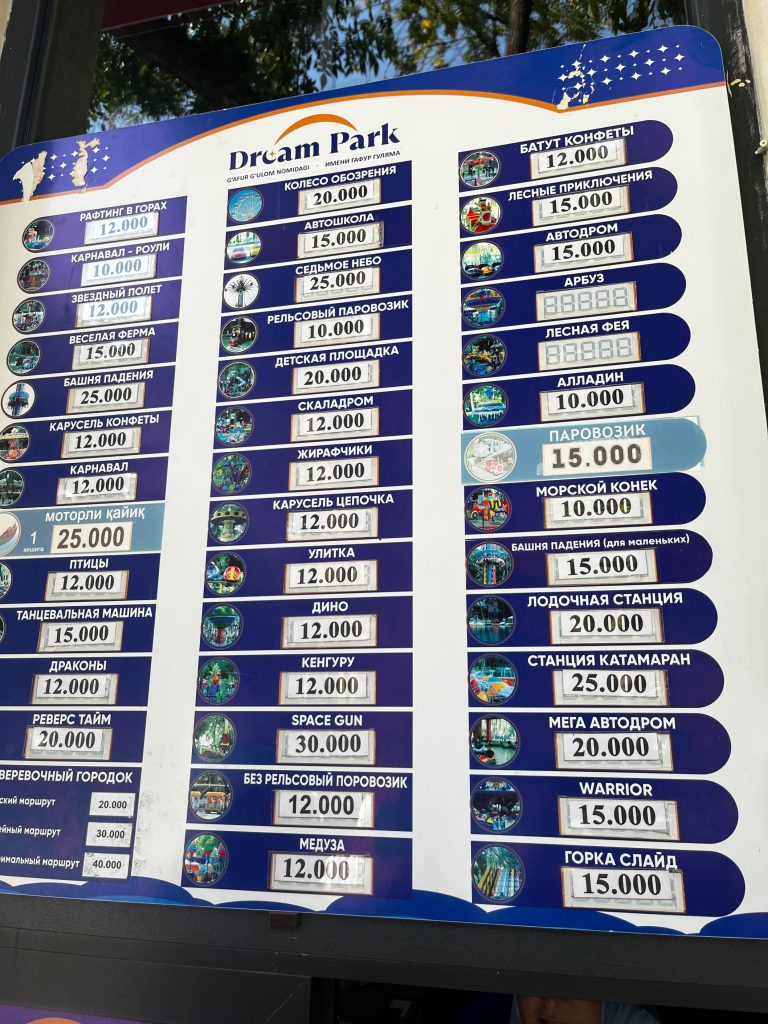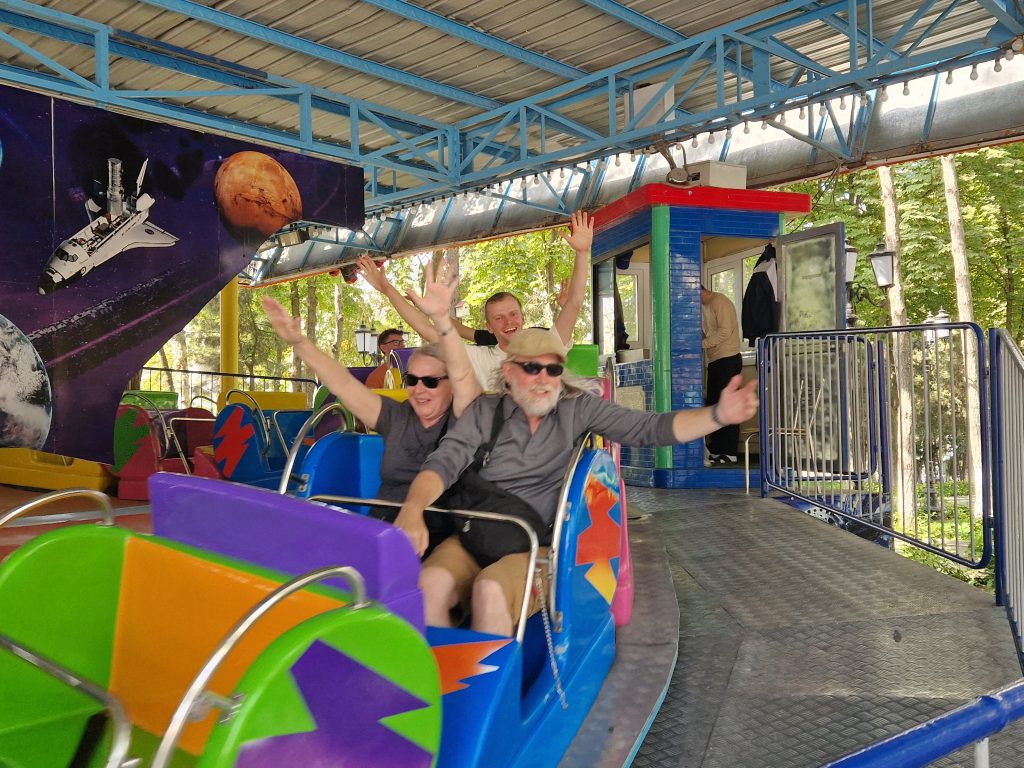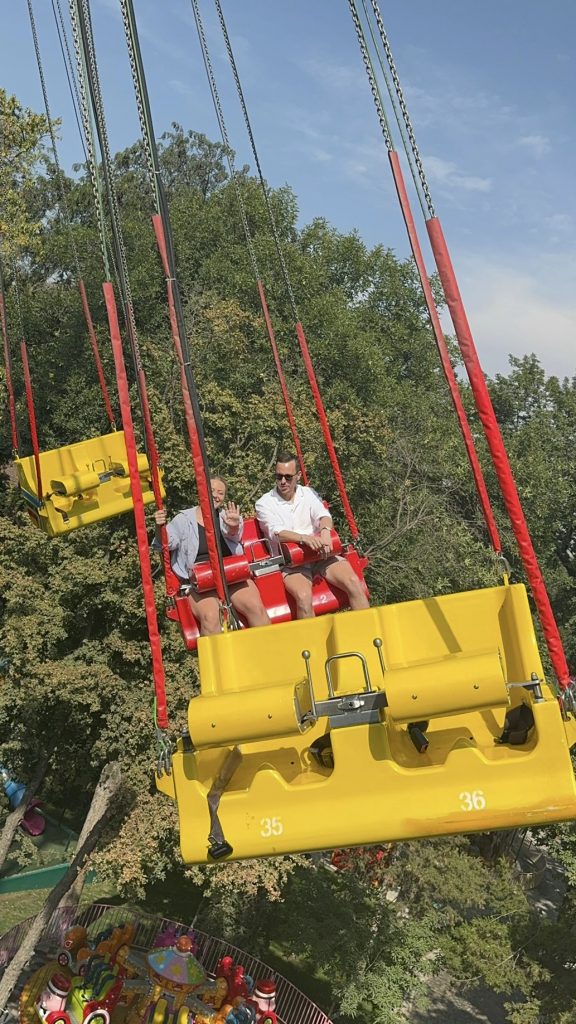If someone asks you where to go for the world’s best theme parks, you’d probably suggest Florida, Southern California or (at a push for our more sophisticated clientele) Paris.
So, when I heard that Tashkent, one of the USSR’s industrial capitals, was gathering a reputation as a hub for thrill seekers, you can imagine the surprise. The city, it would seem, was home to no less than six major theme parks, with dozens of smaller “neighbourhood” amusement parks.
We ended up visiting one of the biggest theme parks in the region, Dream Park. Here, there were several experiences that you would be hard-pressed to see replicated anywhere in the Western world.
If you come to the Uzbek capital on one of our legendary Five Stans trips, then you arrive in Tashkent almost exactly halfway through your tour, regardless of whether you are starting in Almaty or Ashgabat.
So, we take full advantage of our two nights here – and people’s compounding tiredness –to have a more relaxed day exploring what was once the 4th biggest city in the Soviet Union.
What is it like visiting Dream Park?
Among our group, there was a fierce discussion about whether we should go to Magic City or Dream Park. Our favourite Tashkent theme park, the fading glory of Tashkentland, was closed for renovations, giving us a decision as to which of the others we should frequent.
Magic City, we heard, had the big coasters, but the experience at Dream Park was better. After a debate worthy of a more noble cause, we were far from deciding.
At this point, the iconic Caitlin intervened, stating that this was not a democracy and that we would be going to Dream Park. Somehow, we managed to avoid the tears and tantrums that such a decision would bring to most families.
Upon arriving, we walked into a local PR campaign for an Uzbek political party, before heading to the cash counter to put money on our park cards. These were to be used to pay for the rides. As we counted out piles of the worthless Uzbek Sum ($1 = 13,000 Sum), we couldn’t help thinking that our money was perhaps more valuable now than when it was in the form of national currency.
As a group, we decided that a good first ride would be to the haunted house. The man at the gate assured us that it would be “super scary,” or at least that’s what I picked up from my B1 Russian.

The only thing that was scary was the 50,000 sum price tag per person, which we haggled down to 40,000. It’s the only theme park in the world where I have ended up haggling over the price. It was many things, but scary was not one of them…
Underwhelmed but optimistic, we headed to the next ride, a drop tower that looked as if it had been decommissioned from an American park and shipped to the Tashkent theme park a few years ago. It certainly provided value for money, the problem being that, by the seventh drop, we were starting to get cabin fever. Our companions who had waited behind certainly got confused by our sarcastic cries of “boooring!” as we kept plunging, but it was overall great fun.

We arrived just as the park had opened and took the legion of men painting and fiddling with wires on most of the rides as a sign that most of them were inaccessible. Still, we had enough time for one more ride, which turned out to be both the cheapest (at 15,000 sum) and the most fun. That was, at least, until one of our guests smashed into the other, but fun was very much had by all!
Why don’t other Central Asian capitals have theme parks?
Well, if we’re being technical, they do. Ashgabat, after all, has the largest indoor Ferris Wheel in the world, a record that I’m sure will be fiercely competed over in the years to come…
Across the former Soviet Union, localized amusement parks remain popular. They are an inexpensive way for the whole family to enjoy themselves as spring dissolves into summer.
Historically, many were also opened in time for May Day celebrations, a major public holiday across the Socialist world. The most infamous of these is the abandoned amusement park in Pripyat, Ukraine, which has become a symbol of the Chornobyl disaster.
However, what cannot be disputed is that no other Central Asian capital has both the quantity and quality of theme parks as they do in Tashkent. The reasons for this tell us a lot about the differences between these neighbouring countries.

Kyrgyzstan, for example, continues to have many of the rusting miniature amusement parks left over from the Soviet Period. They have also taken advantage of their beautiful mountainous topography to build ethnocentres, promoting Kyrgyz traditional culture.
In Kazakhstan, a healthy injection of oil money has led to huge investments in ski resorts, as well as bizarre vanity projects. Most notoriously, this includes an indoor shopping centre – shaped like a traditional Kazakh tent – with an indoor beach adorned with sand from the Maldives.
Tashkent, being wedged between the mountains, Tajik, and Kazakh borders, needs to use its limited land and resources very carefully. This, and with the country essentially cut off from the outside world until 2017, means that developing theme parks to entertain the city’s 4 million people makes sense from a city planner’s perspective.
Amusement Parks – especially Tashkent theme parks – could utilize (or fully recycle) much of the Soviet technology. They also entertain a large number of people in proportion to the land space they took up. This is not true for ski resorts, ethnocentres, or other large outdoor facilities.
But thankfully, you can experience all of these on YPT’s Five Stans Tours, which operate four times a year, or we can organize a private tour for you. Of course, any private tour can include as many Tashkent theme park visits as your heart desires!





